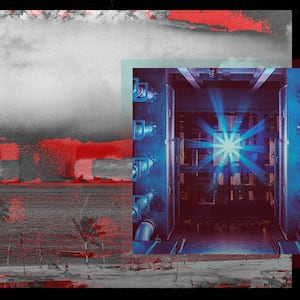Last week, a team of South Korean physicists claimed they created a new material that could change the world: a room-temperature superconductor called LK-99. Such a development would mean potentially unlocking fusion energy, next-generation batteries, and quantum computing.
“We believe that our new development will be a brand-new historical event that opens a new era for humankind,” the authors wrote in one of two preprint papers of their findings uploaded to the internet. (Neither paper has been peer-reviewed and published by a journal yet.).
Since the announcement, there’s been a level of hype and hope for the new technology not seen since the release of ChatGPT. Experts of varying degrees have echoed the South Korean team’s claim saying that it’s a “watershed moment for humanity easily on-par with the invention of the transistor” and akin to “walking through a keyhole for humanity.”
It’s also likely complete BS.
“I take [the announcement] with the proverbial grain of salt, though this particular grain seems closer to the size of a rock,” Jens Koch, a professor of physics at Northwestern University, told The Daily Beast. “This is an area of research where breakthrough claims have been made in the past and then had to be retracted because they did not hold up under scrutiny.
“Some of my colleagues have already voiced concerns about the data presented by the South Korean group,” he added. “I will believe it if or when I see verification.”
To understand Koch’s and other experts’ skepticism, you need to first understand the immense challenges behind this development. Electricity is typically conducted through metal wires made of things like copper, steel, or even gold. However, as the electrical current flows through it, the electrons bounce and bump into atoms—causing them to lose energy.
Superconductors are materials that conduct electricity with zero resistance, allowing the current to flow through without this atomic jostling that regularly occurs with normal conductors. Typically, this is achieved by cooling superconductors down to extremely low temperatures close to zero degrees Kelvin, i.e., close to “absolute zero,” where all atomic movement ceases, or by exerting extreme pressures on the materials that are like the deepest depths of the ocean.
As such, practical applications of superconductors are fairly limited—though they do exist. MRIs used in hospitals are a good example of machinery that utilize superconductors for example. “If superconductors did not come with the requirement and cost of liquid-nitrogen cooling but rather operated at room temperature, a lot more technology and electric infrastructure based on superconductors might become feasible,” Koch explained. “A game changer!”
While researchers have long attempted to build a room-temperature superconductor, attempts have so far failed and claims of success have not been corroborated by other scientists. When it comes to the South Korean team, a number of labs and private scientists are currently underway testing the researchers’ claims.
“Attempts to reproduce the findings are ongoing at multiple institutions worldwide,” Koch said. “In simple terms, other research groups must show that the material involved can indeed be synthesized [using the recipe outlined in the preprint] and that measurements of the material's properties indeed reveal superconductivity.”
Those attempts to replicate the findings so far have largely failed or achieved only partial success. For example, a team at the School of Materials Science and Engineering at Beihang University in China used the process described by the LK-99 team but did not get the same results. Similarly, a team at the National Physical Laboratory of India failed in their attempt as well.
In one of the more novel attempts, an engineer named Andrew McCalip from space industry startup Varda Space attempted to replicate the material via livestream on Twitch. However, he too was unsuccessful.
However, one researcher at Lawrence Berkeley National Lab has released another preprint paper (not yet peer-reviewed), claiming that she was able to replicate the findings using a simulation. While not a direct replication of the experiment, it does add a fair bit of credence to LK-99 and its veracity.
As for the findings itself, there are a few things that give experts pause. For one, there’s the question of the Meissner effect, a phenomenon where superconducting material can fully levitate when put atop a magnet. If it occurs, it’s another big check in the box that the material is in fact superconducting. The LK-99 team published a video showing a piece of the superconducting material on a magnet. However, one edge remains in contact the entire time and, at one point, the entire piece even falls flat.

The LK-99 team published a video showing a piece of the superconducting material on a magnet. However, one edge remains in contact the entire time and, at one point, the entire piece even falls flat.
Sukbae Lee, Jihoon Kim, Hyun-Tak Kim, Sungyeon Im, SooMin An, Keun Ho AuhThe team claims that this is due to the fact that there are imperfections with the material. However, some experts believe it’s likelier that the material isn’t superconductive at all but rather diamagnetic, which means it repels magnetic fields.
But it’s still pretty early in the process. If the LK-99 experiment is verified and replicated by a reputable institution (or perhaps a crafty Twitch streamer), we might truly see the next generation of energy production unlocked. For now, though, it’s better to listen to Koch’s advice and take these reports with a massive grain of salt.








